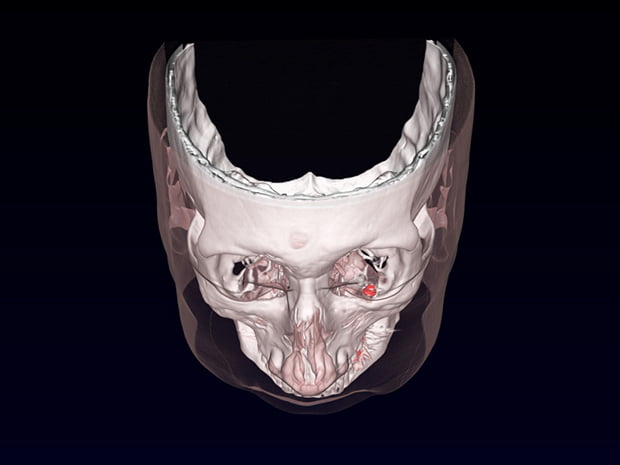
A 49-year-old man finally got relief from a rare, maddening eye disorder after researchers, in an experimental procedure, implanted specialized magnets beneath his eyeballs. The disorder, called nystagmus, or dancing eyes, causes the eyes to oscillate rhythmically, making the visual scene constantly shake. Scientists from University College London steadied the man’s gaze by surgically implanting in each eye a pair of titanium-encased rare-earth magnets. The researchers reported the case study Saturday in the journal Ophthalmology.
Researchers have come up with all sorts of clever bioengineering solutions that involve magnets and the human body, but never one quite like this, says Parashkev Nachev, a neurologist at University College London who led the experiment. For example, engineers have designed small robots guided by magnetic fields that move through the body to do various jobs, such as perform surgery, navigate blood vessels, deliver drugs, palpate tissue, and take biopsies. And doctors have attached prostheses such as artificial noses to the body using magnets.
Nachev’s implant moves magnets into a new biomedical domain—one his team dubbed “oculomotor prosthetics.” The magnets he and his team used are made of samarium-cobalt and neodymium-iron-boron, which are rare-earth materials that are fairly common in the magnet world. They’re encased in titanium to make them biocompatible. And they’re small, of course—about three millimeters in diameter and one-to-two millimeters long.
The device is simple and the surgery is quick. In each eye, a surgeon sutures the samarium-cobalt magnet to the tendon of the muscle on the underside of the eye and superglues—yes, superglues—the neodymium-iron-boron magnet to the eye socket. “Ophthalmologists love superglue and they use it a lot,” says Nachev. When the 30-minute procedure is completed, the magnets attract with enough pull to steady the dancing eye, but not so much that voluntary eye movement is hindered, the researchers report.
Nachev’s team also built a machine to test the force of the magnets before implanting them. They wanted to make sure the magnets were strong enough to stop oscillation but not strong enough to impede voluntary eye movement.
Nystagmus can be maddening for patients, says Nachev. When the condition pops up later in life, it often accompanies other problems of the central nervous system, such as multiple sclerosis or degenerative conditions. Because the cause of nystagmus is broad and complex, no single drug seems to work for most patients. Among drugs that do work “the effects are not usually dramatic,” says Nachev.
The patient in Nachev’s case study, who asked to remain anonymous, had tried every drug in the book, with no relief. His vision and stability got so bad he lost his job as a truck driver and became unemployed.
So, he asked his doctors about experimental treatments. Nachev’s team had heard about an oral presentation from a Brazilian ophthalmologist named Harley Bicas who, a decade ago, had proposed the concept of using magnets to steady dancing eyes. Nachev’s team took up the concept and designed a prototype with help from Quentin Pankhurst, a professor of physics and biomedical engineering at University College London.
After the surgery, Nachev’s patient saw an immediate and obvious improvement. “His world doesn’t shake as badly as it used to,” Nachev says. The man was able to get a job—although not as a driver—and has had the implants for nearly five years now.
Though the experiment was a success, it has yet to be conducted in any other patients. Nachev’s team is planning to test the magnets in another 6 to 12 people in an upcoming study. They also hope to explore other applications, such as modifying the functioning of the eyelids or changing the movement of the eyes in response to other oculomotor disorders. One could even add an electromagnetic component with an externally powered unit, enabling the force of the magnets to be varied on the fly depending on what the patient is doing.
But there’s one big drawback. Anyone sporting magnets in their bodies runs into a major obstacle: They can’t get an MRI. That could be a significant problem for people with nystagmus who often have other neurological issues that require monitoring by MRI. The machine images the body using strong magnetic fields and could, to put it in the least grotesque way, “displace” the magnets in a patient’s body. “I hate to even think about it,” says Nachev.
[“Source-spectrum”]
